Calibration gluttony, or the final consumption of ammunition by the Russian artillery of the First World War
Norms of three-inch artillery
The rate of average combat consumption or average daily consumption of art shots in a certain period (operational period) varies depending on the nature of the hostilities. Thus, a head-on battle in an environment of maneuvering war, an offensive against a defending enemy, a breakthrough of reinforced bands, and defense in an environment of maneuvering or positional hostilities directly imprinted on the expenditure of the most common type of artillery ammunition. As well as the duration of the corresponding operation. The established norms of the average daily consumption of shots do not exclude the necessity of calculating the rate of shots necessary for the implementation of the corresponding operation - and the established standards of the average daily consumption serve as starting data when calculating the total number of necessary shots.
To establish the average daily combat flow rate of artillery shots based on the experience of the positional stage of the war, data on the average daily discharge per barrel (with “keeping the necessary cost savings”) determined by Upart based on the experience of the spring battles of the 1916 of the South-Western Front - figures were communicated to the head GAU (28. 06. 1916 G. No. 971). According to this data, the daily average flow rate was determined: for 76-mm light guns in 60 shots, for 76-mm mountain cannon in 25 shots, for 75-mm Japanese gun Arisaka in 40 shots on the barrel. The calculation of the number of shots required for hitting targets in breaking through a fortified strip (destruction of artificial obstacles, etc.) was based on the “Manual for Fighting for Fortified Strips” Part II. "The action of artillery in the breakthrough of the fortified zone." As noted earlier, it was published by Uphart in 1917, and in annex VII to the document based on the experience of 1916-1917 combat operations. indicated the approximate average consumption of shells per barrel - by day. For 76-mm field (mountain) guns, it was determined as follows: for the first three days of operation (attack and subsequent development of success) - 250 shells per day, for a further seven days (pursuit) - 50 shells per day.
To establish the rate of the average daily combat expenditure of 76-mm guns for the maneuverable period of war, as noted, you can use the data from the reports of the South-Western Front regarding the average expenditure of shots during the period August - September 1914. These data differ (which is quite natural, t. to. they relate to combat clashes of various nature and duration). In accordance with these data (on the day of the battle, the 76-mm gun used up 20 to 63 shells), the average daily combat consumption was about 40 shells.
In this calculation, isolated exceptional cases of the enormous expenditure of shells that occurred at the beginning of the war were discarded, when several batteries made several hundred rounds per day for three inches.
The average rate of need (the rate of mobilization stock) in artillery shots can be approximately determined by calculating the expenditure for a long period of war or for the war as a whole, but provided that there are no special restrictions on the use of shots in the time period taken into account, such as army from autumn 1914 g. to autumn 1915 g .; and then a corresponding plus amendment should be introduced in the corresponding calculation in case of providing ammunition for operations requiring very large expenditure, as well as in the case of other unforeseen circumstances; when determining the size of the amendment, it is necessary to take into account the rate of the average combat expenditure, which is derived for a certain period of the corresponding operations.
Upart data indicates that 1916 million 18-mm projectiles were spent in 76. Accordingly, the average monthly demand is 1,5 million (i.e., 9 - 10 shots per day) shots on the 76-mm gun, but without the plus amendment. To calculate this amendment, the rate of average monthly combat flow rate determined by Upart is 2229000 shots for intense 5 months 1916 months, from which, with a total number of 5500 - 6000 guns, will be released on one three-inch approximately 400 shots per month or 13 - 14 shots per day.
At the beginning of this year and then from August there was a certain lull on the Russian front, when the flow reached approximately 5 shots per day. E. Z. Barsukov, based on the specifics of the positional and maneuverable periods of the First World War and the experience of the Civil War, noted that the rate of monthly average combat expenditure should be 400 shells per 76-mm gun per month, which is 4800 shots per year and 14 shells per day.
The indicated average daily demand for 14 76-mm projectiles is derived according to 1916, and, accordingly, refers to the positional period of the war.
The most reasonable requirement regarding the number of 76-mm shells for the period of maneuvering war is the telegram of N.I. Ivanov, commander of the South-Western Front for artillery from 10. 10. 1914 d. 1165, then confirmed by the Headquarters Headquarters. In this telegram, N.I. Ivanov reported that the average consumption on his front was for 16 days of August for 350 76-mm shells per barrel, or for 22 shots per day, which the general recognizes as "very moderate." E. Z. Barsukov respectively noted that if we recognize for periods of combat calm (both in maneuvering and positional warfare) the flow is equal to 5 shots per barrel, then the need for a period of maneuvering war on an average day of the year will be 22 + 5: 2 That gives all the same 14 shells per day for a three-inch (or 420 per month).
The consumption of shots in individual combat operations of a maneuverable war is less than in a positional war, when a huge expenditure of artillery shots is required when making breakthroughs in a fortified band — to destroy wire barriers, destroying various fortifications, etc. But the total total need for gunfire for maneuver war is higher than the need for positional wars — after all, in a maneuvering war, clashes occur much more frequently than in a positional war — breakouts of fortified bands.
Drawing parallels with a later period, E. Z. Barsukov wrote that, defining modern combat supply standards, basic for stockpiling reserves in case of war and for preparing industry mobilization in wartime, the above-mentioned monthly need for 420 shells for 76-mm cannon increase to about 500 - 600 shots (Petrograd Allied Conference in January 1917 determined the monthly need for a year of fighting in 500 shots for 76-mm guns), or to 17 - 20 shells per day. The number of operating guns, the vastness of the upcoming theater, the state of transport, the development and direction of communication lines, etc., will have an effect (because the more guns there are, the smaller the reserve of shots can be, and vice versa, the larger the theater and the weaker the transport, the larger the reserves must be etc.). As a result, the presence of about 6000 76-mm guns (field, mountain, etc.) dictates the average annual need for war or the rate of mobilization stock of 76-mm shells - according to 20 shots per gun per day.
Shells for howitzer and heavy artillery
During the First World War, the Russian Army had a shortage of shots for howitzer and heavy artillery (especially for large caliber guns) even more tangible than the lack of 76-mm projectiles. But at the beginning of the war this shortcoming was not fully realized, because, firstly, there was little heavy artillery, and secondly, that extraordinary “hype” that did not arise during the war around the issue of gunfire for heavy artillery around the issue of shots for light 76-mm artillery.
Requirements of the Bet (Upart) on meeting the needs of the Army in relation to howitzer and heavy shots to the rear were not considered exaggerated, but at the same time they performed them very poorly, especially in 1914 - 1915. Even A. A. Manikovsky, inclined to see in the requirements of Upart “senseless” exaggerations, found the requirements of Upart regarding shots for heavy artillery that meet the current need. Moreover, as noted by E. Z. Barsukov: “A. A. Manikovsky repeatedly reprimanded Uparp for his weak persistence in limiting the “dispersal” of Russian 76-mm projectiles, leading to “obvious and irreparable damage” not only for military supplies, especially for heavy artillery, but also for the entire national economy. In this regard, he was absolutely right in principle, but his reproaches to Ufart were sent to the wrong address. Upart, as an organ of the army at the front, was not at all in power to create this or that supply “policy” in the rear. According to the laws of that time, all this should have been in charge and only the Minister of War should have disposed of all this. ”
One way or another, the requirements imposed by Upart on supplying the army with howitzer and heavy artillery shots were considered modest, but they were, more precisely, even too modest.
The data on the average mobilization demand, monthly and daily, and on the average combat expenditure of various types of artillery shots are summarized in Table No. 1 (Table No. 1 and the subsequent Tables No. No. 2 and 3 are based on the materials of the Upart archive and the personal archive of A. A. Manikovsky, and in relation to the French artillery - according to French sources: Rebuhl. Military production in France in 1914 - 1918 Translation 1926, Gascuen. The evolution of artillery during World War II. Translation 1921, Herr. Artillery in the past, present and future. Translation 1925). In the same table for comparison, the data are applied to the French artillery in the operation under Verdun 1916. In the future, the French artillery's need for artillery fires in the implementation of military operations (average consumption) significantly exceeded the one indicated in the table).
The French, according to the artillery colonel Langlois, considered it possible to launch an offensive operation only when the number of shots at the gun was brought from them to that indicated in Table No. 1. As can be seen from this table, the average daily combat consumption of artillery fires assumed by the French significantly exceeded the average daily consumption of Russian artillery - for example, 6 times for field guns. But the real consumption of shots near Verdun over a longer period than the 20 days indicated in the table turned out to be slightly less than expected.
According to the testimony of the same Colonel Langlois, in the period from February 21 to 16 1916 in June (116 days), the field guns of 1072-75-mm calibers used in the battle of the French 90 (i.e., e-guns). averaged over 10642800 shots per gun day). This average daily combat flow rate is close to the Russian actual expenditure in the operations of the South-Western Front in the spring of 87 - up to 1916 shots per day for a three-inch gun, i.e. French consumption exceeded Russian consumption of field cannon artillery 60 times.
As for the average mobilization (annual) need, then, according to E. Z. Barsukov, the average daily demand per field gun was approximately: in French artillery 1914 r. 9 shots, and in the period 1918 r. About 60 shots; in German artillery in 1914. 8 shots, in subsequent years, much more; in Russian artillery in 1914 about 3 shots, in 1916 about 9 shots. But as explained above, the numbers of 3 and 9 shots per gun per day do not meet the actual need of Russian artillery, and it is more correct to determine the average daily need for at least 17 three-inch shots, and the average monthly need for 500 shots per gun (if available in the army 5,5 - 6 Thousands of Acting Field Guns), as indicated in Table No. 1.
When comparing the total consumption of artillery shots of Russian and French artillery for a long period of the First World War, and not for periods of individual operations, it can be seen that the Russian consumption is insignificant compared with the enormous waste of French projectiles even for individual operations (see Tables 2 and 3; numbers tables are rounded).
Table No. 2 shows the consumption of shots of guns of almost all calibres, which were in service with the Russian army during the first 29 months of hostilities, i.e., in 1914 - 1916. The consumption of 76-mm shots in 1917 g. - about 11 million; respectively, all in 1914 - 1917. It was spent on the Russian front about 38 million 76-mm shells.
Table 3 gives far from complete data; for example, for 1914, only the 75-mm shots are shown, the heavy shots of the 220 are not shown - 270-mm caliber, etc. However, the information provided is enough to judge the huge expenditure of shots by the French artillery - not only for defeat various kinds of purposes, but also for various protective, warning and other lights, that is, about such extravagance in the expenditure of shots, which Russian artillery did not allow itself.
As can be seen from table number 3, the French 75-mm field artillery in 1914 by the end of the Marne battle spent about 4 million shots, while the Russian artillery for the whole 1914, spent only about 2,3 million 76-mm shells. During 5, separate 1915, 1916 and 1918 operations. French gunners fired 10 million 75-mm shells (including only for the somm month 24. 06. - 27. 07. 1916 g. - before 5014000 pieces, and the record holder who ate more than a million 75-mm Grenade, became the day of July 1 (approximately 250 grenade per gun, and this is excluding shrapnel), in addition to large-caliber shells.
Meanwhile, A. A. Manikovsky and some other persons considered the consumption of shots for Russian artillery for 1,5 million per month to be excessively high, and the requirements of the Army on 2,5 to 3 million 76-mm shells per month (or 14 - 18 shells per gun per day) "clearly exaggerated, even criminal."
Over 1914 - 1917 Russians spent around 38 million 76-mm shells, and the French spent about 14 million 75-mm rounds spent for only a few operations. It should be recognized, notes E.Z. Barsukov, that “contrary to the established opposite opinion, that the Russian artillery spent the shots during the First World War relatively few, if its expenditure is compared with the expenditure of the shots of the French artillery. But in general the expenditure of shots in the world war was huge in Russian artillery; this expenditure would have been considerably less with skillful use of artillery by senior commanders. ” He called to anticipate the colossal expenditure of artillery shots in future wars - regardless of how well prepared the army is in terms of the art of using artillery and how artillery is careful in spending the shots. Saving the shots, the expert noted, is irrelevant when the gunners need strong support to solve the fate of the battle. And then the rate of fire of modern guns, allowed technical conditions should be used, not really reckoning with the consumption of shells.
The Russian rapid-firing three-inch "big" motovka "shells, which in a relatively short time, she can shoot those 3 - 6 thousands of shots, followed by damage to the gun. Accordingly, we should not forget about the need to prevent the guns from being shot — not by reducing the number of shots or prohibiting the use of the full rate of fire of excellent guns, as some recommend, but by careful handling of the guns, but by “correct and sufficiently calculating the mobilization need for guns and in advance mobilization preparation of factories not only for the manufacture of materiel and fire artillery pieces, but also for the correction of guns. ”
- Oleynikov Alexey
- The appetite of war. The consumption of artillery ammunition by the Russian army in the First World War
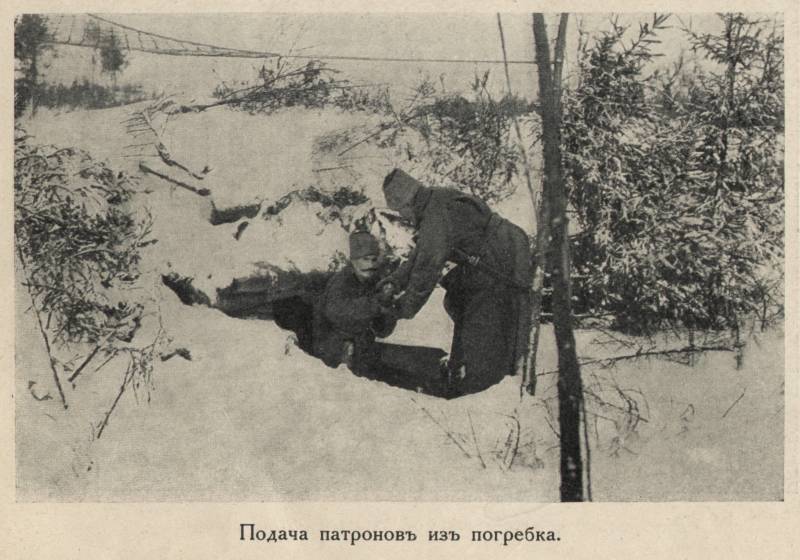
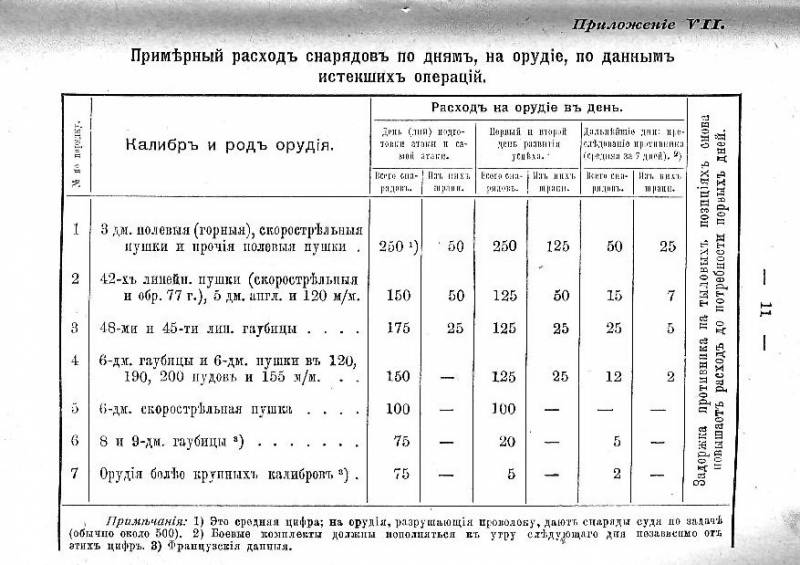
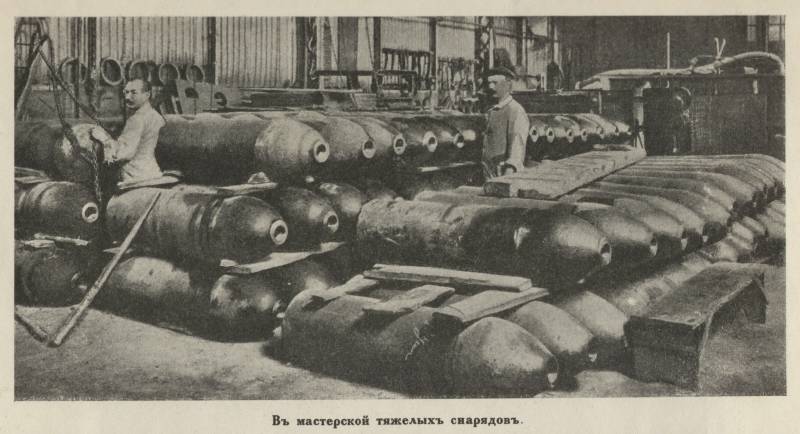
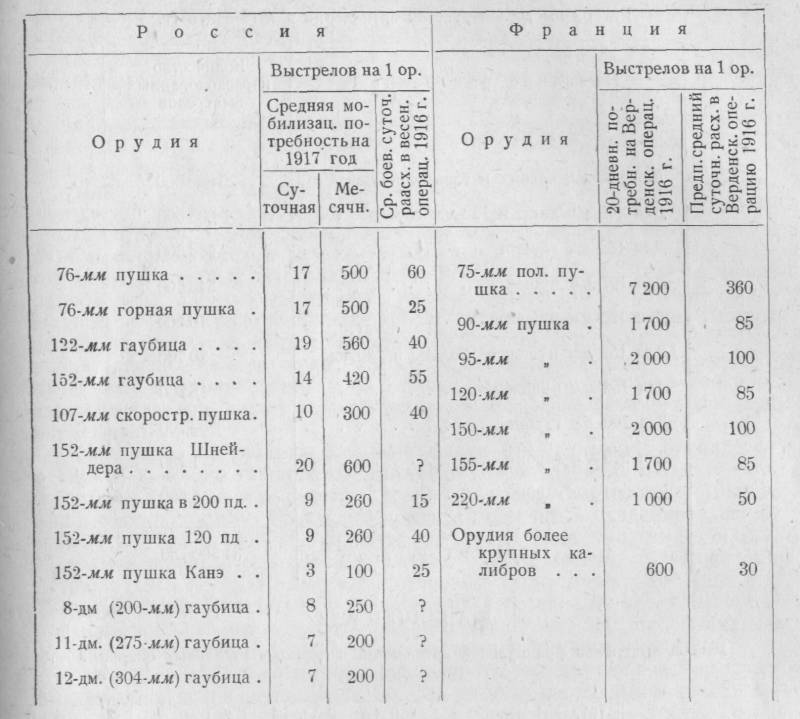
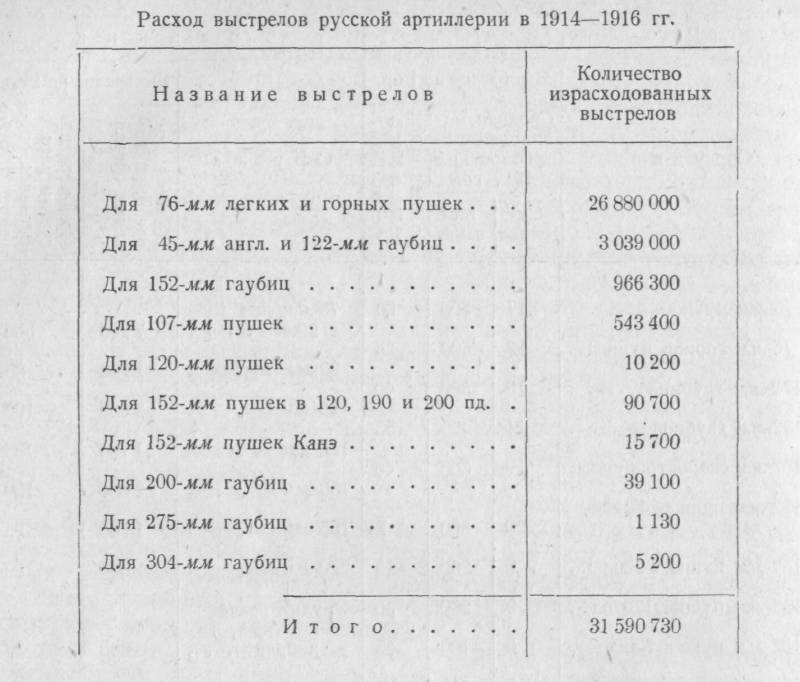
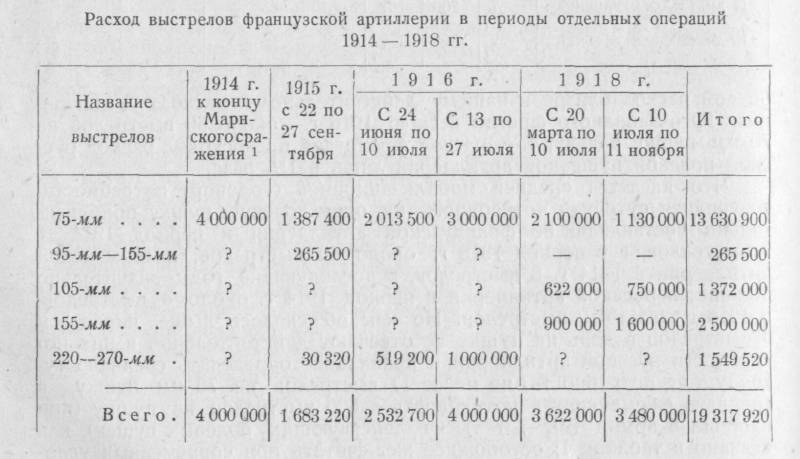
Information